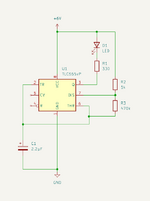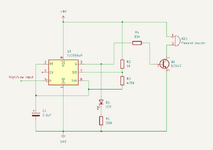itelec
Junior Member level 1

I made a TLC555 circuit for making a LED blink. It works fine but what I want is to make this led blink every time the output of an LM393 goes high and stop blinking when the output goes low for an alarm. I attached the screenshot of my timer circuit. I really hope you experts can help me solve this.



